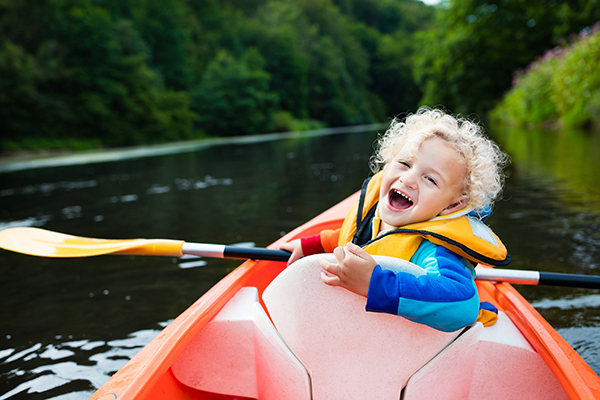Summer’s the time for road trips, beach destinations and sun—lots of it.
So if you’ve packed sunscreen for your family, that’s great, but that’s just one step.
“When it comes to protecting yourself and your children from the sun and sun-related illness, I always advise layers of protection,” said Dr. Clay Stallworth, a pediatrician at the Children’s Hospital of Georgia. “Shelter, then clothing, then skin application.”
So along with sunscreen, ensure you have an umbrella or tent and hats for the beach—and use them. When you add in the sunscreen, be sure you’re using it correctly. Aim for an SPF of 15 or 30 that specifies protection against both UVA and UVB rays, and reapply as directed, about every two hours or after swimming. “You don’t need an SPF 1000,” said Stallworth. “The tricky thing is if you do use a higher SPF, you think you can put it on once and go all day, but that’s not the case. If you sweat, if you get wet, if you towel off or if it’s been longer than two hours, you always need to reapply.”
Here’s a little trick too: To avoid sunburn, make sure you’re very well hydrated. You may have to make a few more pit stops, but drinking plenty of water can reduce your risk of getting burned—and can help you recover if you do get a little red. Also, try not to go out in the middle of the day between 10 a.m. and 2 p.m. when the sun’s rays are their brightest.
Babies under 6 months shouldn’t be out in the sun and shouldn’t wear sunscreen on their delicate skin. (However, if extended direct sun exposure is absolutely unavoidable, then apply SPF 15 or higher to the exposed areas, since exposure to sunscreen is preferable to sunburn.) Once they hit that magic number, follow the same guide on shelter, clothing and sunscreen. As hard as it may be to rub sunscreen on a wiggling toddler or a child who just wants to run into the water, do it—and make sure to rub it in even if you use a spray-on sunscreen to make sure your child is evenly protected. “Also, if you’re using a sunscreen for the first time on a baby, it’s a good idea to first try it out on a limited area, like a small area on a foot, the day before,” said Stallworth. “That way, if your child does have a reaction, you’ll know and can choose another option.” And in any case, always make sure to wash off sunscreen before going to bed.
With Sun Comes Water
With many of us hitting beaches at lakes or oceans this summer—or even just the pool—drowning prevention is another major summer safety concern.
While dry drowning has been widely covered in the media, Stallworth says that knowing how to protect children from actual drowning or near drowning is more important by far.
“At home, follow the two-gate rule: a gate to the backyard and another one around the pool,” said Stallworth. Even if children take swim classes and you are confident they know how to swim, you can’t trust that they can go into a pool alone, he added.
“Sometimes I will ask kids, ‘Are you old enough to swim by yourself?’, and sometimes they’ll answer yes,” said Stallworth. “And I tell them, well actually, no, because I’m not even grown up enough to swim without someone watching. Even if you’re an adult and a great swimmer, it’s good advice anytime to swim with someone else around who can help in case you get a cramp, get tangled up or have some other problem.”
At the ocean or even in rivers, make sure to follow rules or just logic if there are strong currents, waves or rapid waters. And anytime children go boating or play other water sports, make sure they wear life jackets every time.
Time for a Road Trip?
When it comes to summer safety, nothing is more important that ensuring you as a parent are driving safely. “Driving a car is 100 times more lethal than drowning, yet it’s never on the news,” said Stallworth. “Over 30 thousand Americans die every year due to injuries related from a car accident.”
It’s a sobering fact, but also a reminder to always use the correct car seat for your child and to ensure that it’s correctly installed. Children should remain rear-facing until they are at least 2 years old, and should continue to be in a car seat then a booster, until adult seat belts fit them correctly—usually when they are at least 4 feet, nine inches in height.
Also make sure your car is in good condition by following recommended maintenance and ensuring tires and brakes don’t need to be replaced. “The biggest thing if you want to spend your effort wisely to prevent probable injury is to worry about the car,” he said.
Still, generations of Americans have enjoyed the road trip as the signature trip of the summer. While we might sometimes see long car trips as a hassle, said Stallworth, it’s also an opportunity. “Don’t just get lost in your own environment, with each kid watching their own DVD with headphones,” he said.
Instead, play games, sing songs, look for fun roadside attractions. “You’re all in the car together, so have some things you like to do,” said Stallworth. “Make some cool memories.”




